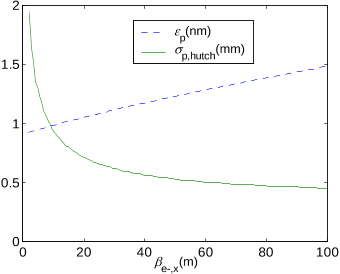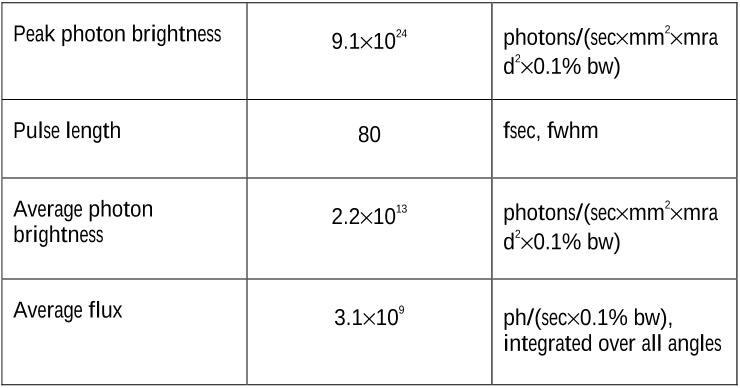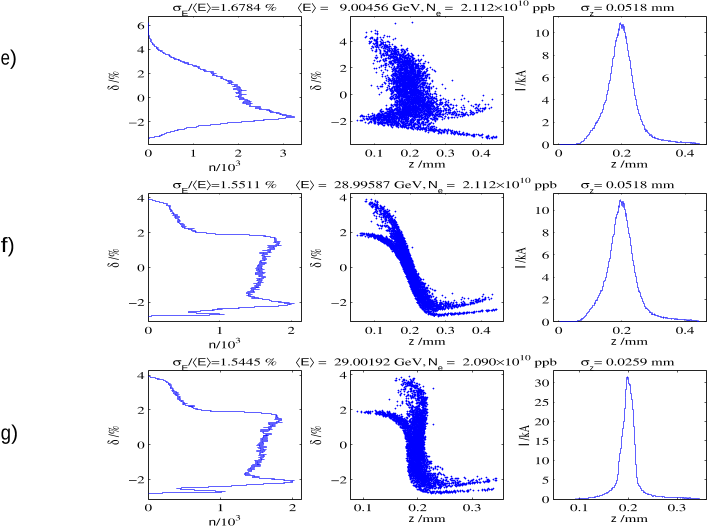




Did you find this useful? Give us your feedback


























12 citations
9 citations
...The new Subpicosecond Pulse Particle Source (SPPS) [3] already can produce electron pulses as short as 30 femtoseconds rms....
[...]
5 citations
...FELs work by a resonant exchange of energy between the electrons and the electromagnetic field they generate....
[...]
...There are many different configurations for FELs, but the underlying mechanism is common to all....
[...]
...A fundamental scaling parameter which arises from the 1D theory for high-gain FELs is the Pierce parameter (ρP), defined as 17 Gt 12% u v ML KL wxxy 4 @A z . s (1.22) where I is the electron beam current, IA is the Alfvén current, σx is the transverse electron beam size, λu is the undulator period, au is the undulator parameter, γ is the relativistic factor and [JJ] is the Bessel function factor wxxy {x &-2' x. &-2'| ; - KL 1 ( KL (1.23) Using this parameterisation, the 1D theoretical gain length of the radiation power is given by S~ ML4 √3Gt (1.24) and hence the cooperation length (Lc) is S MB4 √3Gt (1.25) The Pierce parameter gives a measure of the efficiency of the FEL process; a large value indicates short gain lengths - large power growth, and so electron beams with high peak current, low emittance and low energy are favoured....
[...]
...Magnetic bunch compression is a pre-requisite for fourth generation light sources, but can also be used for short-pulse facilities based on spontaneous radiation sources (rather than FELs) [84]....
[...]
...Rather than using electron storage rings, fourth generation facilities are based on single-pass, high gain FELs which utilise high-brightness electron linacs in combination with long undulators, producing light with peak brightness many orders of magnitude greater than can be achieved with third generation facilities....
[...]
4 citations
3 citations
...The new Short Pulse Particle Source (SPPS)[2] at SLAC offers a nearer term opportunity to test and compare these different diagnostic techniques with bunches as short as 30 fs rms, far shorter than anything so far produced in a high energy electron accelerator....
[...]
...Each of these techniques will be described in the following sections and their potential for reaching the necessary resolution in the LCLS and SPPS will be discussed....
[...]
...The locations of the SPPS and LCLS installations are shown in figure 1 in relation to the other accelerators at SLAC....
[...]
...The new Short Pulse Particle Source (SPPS) [2] at SLAC offers a nearer term opportunity to test and compare these different diagnostic techniques with bunches as short as 30 fs rms, far shorter than anything so far produced in a high energy electron accelerator....
[...]
...SPPS will only produce spontaneous x-ray radiation from its undulator but the peak spectral brightness from this source, at 1024 photons s-1 mm-2 mr-2 (0.1% bandwidth), still exceeds that of any existing x-ray source....
[...]